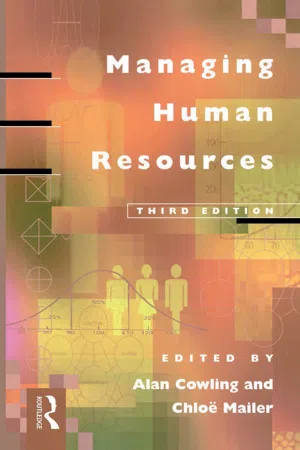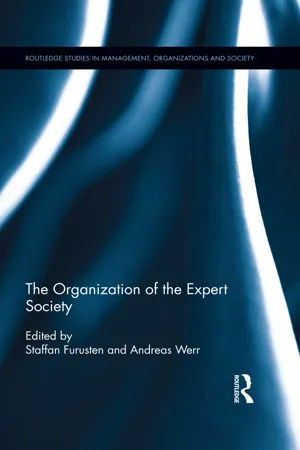Employee Selection Methods
Employee selection methods are the processes used by organizations to choose the most suitable candidates for job positions. These methods can include interviews, assessments, reference checks, and background screenings. The goal is to identify individuals with the right skills, qualifications, and cultural fit for the organization.
6 Key excerpts on "Employee Selection Methods"
- Iain Henderson(Author)
- 2017(Publication Date)
- CIPD - Kogan Page(Publisher)
...In a word, modern organisations typically need fewer employees, but these must be of a higher calibre than was often the case in the past. There are fewer and fewer unskilled and low-skilled jobs in advanced economies. The need to establish a close relationship between corporate competitive strategies and HRM has produced the concept of ‘strategic selection’ in which the selection system supports the overall current and future business strategies. As we saw in Chapter 1, this underpins the whole idea of HRM as an approach to managing people. For these reasons organisations are now more likely than in the past to use relatively costly techniques that previously would have been reserved for senior high-salary positions, such as psychometric testing or assessment centres, for selection for ordinary jobs. REFLECTIVE ACTIVITY 2.3 Think about how you were appointed to your present job. Clearly, the right decision was made! But as a professional manager, how would you rate the effectiveness of the process? What could you do to make it more efficient in the future? 2.6 SOME COMMON SELECTION TECHNIQUES The most common predictors used in the selection process are interviews, tests, information from application forms or letters, curricula vitae (CVs) or résumés, and references from previous employers (CIPD 2015f). The use of information technology (‘e-recruitment’) has obviously impacted on recruitment and selection as with most other management processes. While early predictions of its revolutionary effect on practice seem to have been overstated, at least at the time of writing (Torrington et al 2014), online sources such as company websites and social media are widely used by recruiting organisations, but typically in combination with traditional media such as newspaper and journal advertising...
- eBook - ePub
- Alan Cowling, Chloe Mailer, Alan Cowling, Chloe Mailer(Authors)
- 2013(Publication Date)
- Routledge(Publisher)
...3 Selection methods John Lane and Tanya Pyne DOI: 10.4324/9780080928807-5 3.1 Introduction The process of selection is perhaps the most important of activities in managing human resources. To say an organisation is only as good as the people in it is a cliché, but like most clichés it is substantially true. Choosing the right person for the job enhances organisation efficiency by ensuring the job is well done. More than this, effective selection can help enable ‘promotion from within’ and make management development policies practical realities. In this latter context selection must be seen in the light of the company’s manpower plan which follows from its business plan. The importance of good selection is highlighted by the effects of making wrong choices, for example: increased recruitment costs from having to readvertise a vacancy and time spent screening application forms, writing letters, setting up initial interviews and other assessment methods; the damaging effect on team morale – caused by staff instability – can be aggravated by diminishing respect for a management which has demonstrably showed lack of judgement through its selection methods; while the vacancy remains or the wrong person is in the job, the job is not being properly done, creating an opportunity cost to the organisation which can be substantial. The chances of picking the right person at the outset are greatly influenced by the choice of assessment available to management and the degree of accuracy employed to assess knowledge, competencies and personality traits. Selection is essentially a two-way process where the employing organisation seeks to assess the suitability of applicants in terms of what it requires. Applicants make similar judgements on their own criteria, i.e...
- Steven G. Rogelberg(Author)
- 2016(Publication Date)
- SAGE Publications, Inc(Publisher)
...Employee Selection Employee Selection Nancy T. Tippins Nancy T. Tippins Tippins, Nancy T. 378 387 Employee Selection Nancy T. Tippins Employee selection refers to the process that employers use to determine which candidates to select for a particular job or role within the organization. (Some organizations select for a particular job, e.g., customer service representative, whereas others select for a broader role, e.g., management.) Often, employee selection connotes pre-employment selection (i.e., determining which external applicants to hire); however, the same term can also apply to a number of situations in which individuals are placed into an organizational role or job. For example, employee selection can also refer to promotions and transfers of existing employees into new positions. Occasionally, the term is used broadly to refer to the process of selecting individuals into programs such as management training and development programs, high-potential development programs, or succession planning programs, in which the individual does not immediately assume a particular role or job but instead participates in a developmental process to prepare for a new role or develop the skills and abilities required in the current job. Candidates may be external applicants (i.e., applicants with no current association with the hiring organization) or internal candidates (i.e., current employees seeking other positions in the organization). However, employers sometimes seek candidates from only one source...
- eBook - ePub
- Andreas werr, Staffan Furusten(Authors)
- 2016(Publication Date)
- Routledge(Publisher)
...10 Expertise in the Selection of Employees Pernilla Bolander This chapter focuses on employee selection and touches on expertise in two different ways. First, employee selection is an important organizational process for assessing individuals and their attributes. In the selection context, expertise is, in other words, subject to assessment. Second, selectors make use of their expertise to assess candidates and make decisions about whom to hire. This expertise is not uniform and may be based on different domains of knowledge. Therefore, it becomes interesting to explore how selection experts legitimize their expertise and thus also their working methods and decisions. In my studies of employee selection, I have interviewed a number of people engaged in their organizations’ selection processes and asked them how they assess candidates and how they know that they have found the right person (Bolander, 2002). A common response is “gut feeling”. You know it is the right person because it feels right. Others, on the other hand, answer that they have a selection process that is well thought through and proven. They work in a methodical and structured manner, and use tools that are technically rigorous. In this chapter, we will take a closer look at these two dominant ideas of how to find the right person—through gut feeling or formal methods. We will consider them as legitimization grounds and explore the consequences of their use. Based on a study of the everyday practice of selection, a third possible ground for legitimation is introduced—namely, contextual knowledge. Research on Employee Selection Human Resource Management (HRM) had a wide breakthrough in the 1980s and is today often used as a broad term for “activities associated with the management of work and people in organizations” (Boxall & Purcell, 2011, p. 1). Key activities include, in addition to recruitment and selection, developing, evaluating and rewarding employees at all levels...
- eBook - ePub
Resourcing and Talent Management
The Theory and Practice of Recruiting and Developing a Workforce
- Stephen Taylor(Author)
- 2021(Publication Date)
- CIPD - Kogan Page(Publisher)
...Some have similarities with action-based or adventure games and are designed to test how quickly people are able to make effective decisions under a degree of pressure. Others are more strategy-oriented, designed to test a candidate’s judgement and experience. Research on the true effectiveness of these game-based selection techniques is as yet limited, but there is some evidence to suggest that candidates easily become fully immersed in playing the games, less anxious about a selection process and thus less liable to present an inauthentic persona. There is also evidence to suggest that because candidates enjoy playing games when being tested, they are more likely to form a favourable view of the organisation and hence accept a job if it is offered (Hawkes et al, 2018). Further reading A number of texts cover all four of the selection methods discussed in this chapter as well as the legal and ethical issues. These include Assessment M ethods in R ecruitment, S election and P erformance by Robert Edenborough (2005) and Personnel Selection: Adding value through people – a changing picture by Mark Cook (2016). More extensive academic treatments are found in The Oxford Handbook of Personnel Assessment and Selection edited by Neal Schmitt (2012) and in The Wiley Blackwell H andbook of the Psychology of R ecruitment, S election and E mployee R etention edited by Harold Goldstein et al (2016)....
- eBook - ePub
- Stephen Taylor(Author)
- 2018(Publication Date)
- CIPD - Kogan Page(Publisher)
...Some have similarities with action-based or adventure games and are designed to test how quickly people are able to make effective decisions under a degree of pressure. Others are more strategy-oriented, designed to test a candidate’s judgement and experience. Research on the true effectiveness of these game-based selection techniques is as yet limited, but there is some evidence to suggest that candidates easily become fully immersed in playing the games, less anxious about a selection process and that they are thus less liable to present an inauthentic persona. There is also evidence to suggest that because candidates enjoy playing games when being tested they are more likely to form a favourable view of the organisation and hence accept a job if it is offered (Hawkes et al, 2018). Explore further A number of texts cover all four of the selection methods discussed in this chapter as well as the legal and ethical issues. These include Assessment methods in recruitment, selection and performance by Robert Edenborough (2005) and Personnel selection by Mark Cook (2016). More extensive academic treatments are found in The Oxford handbook of personnel assessment and selection edited by Neal Schmitt and in The Wiley Blackwell handbook of the psychology of recruitment, selection and employee retention edited by Harold Goldstein et al (2017)....





